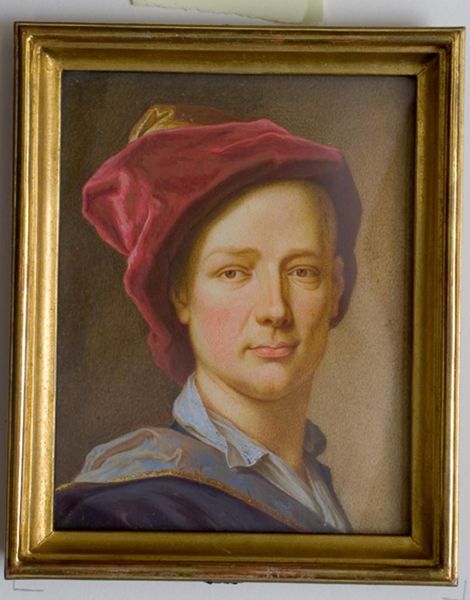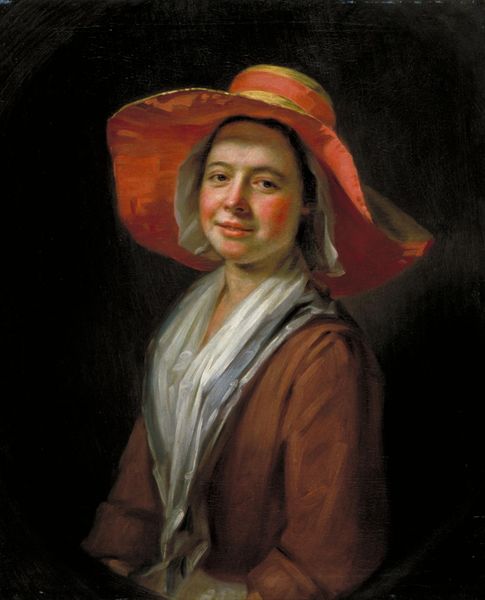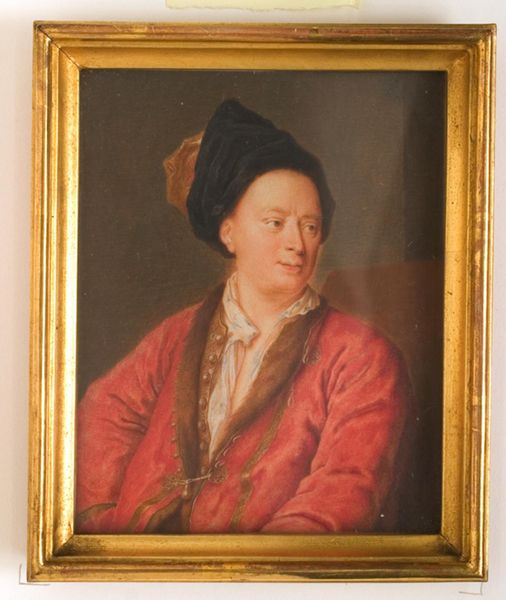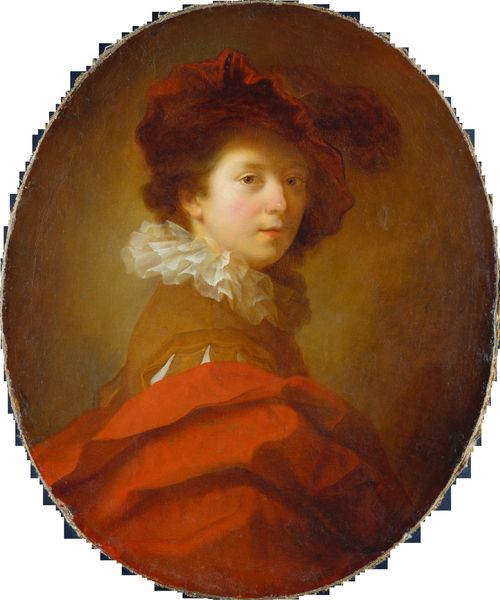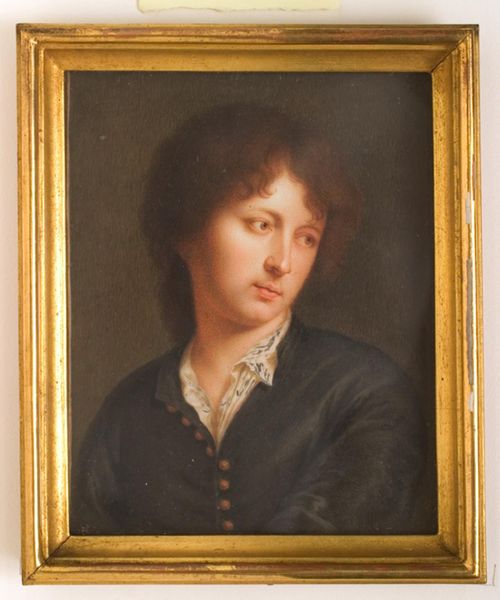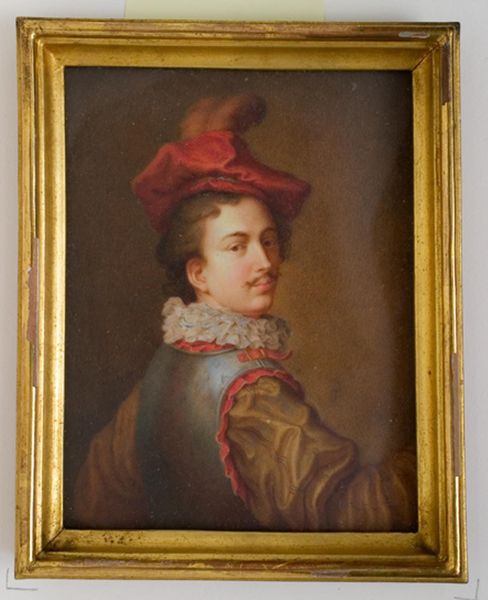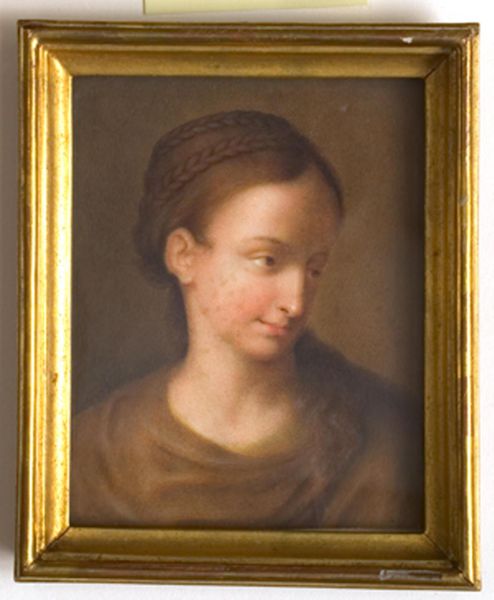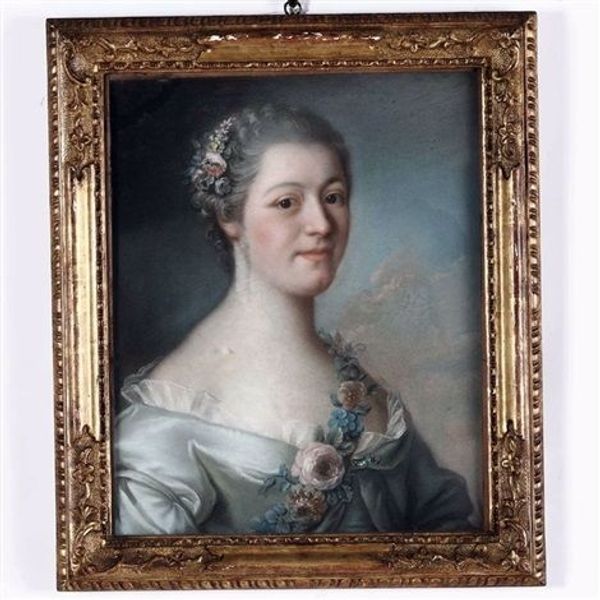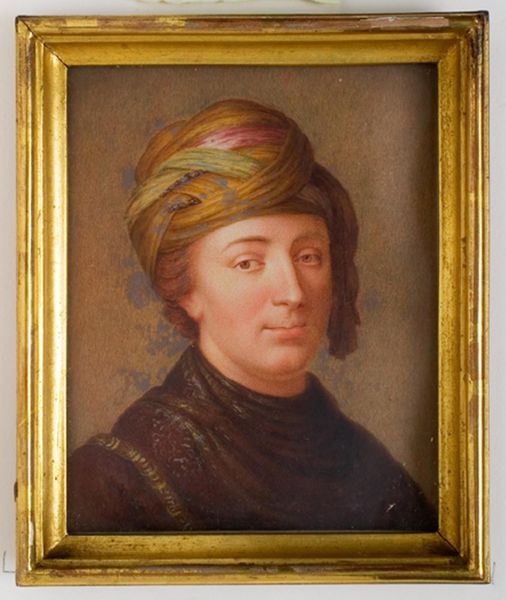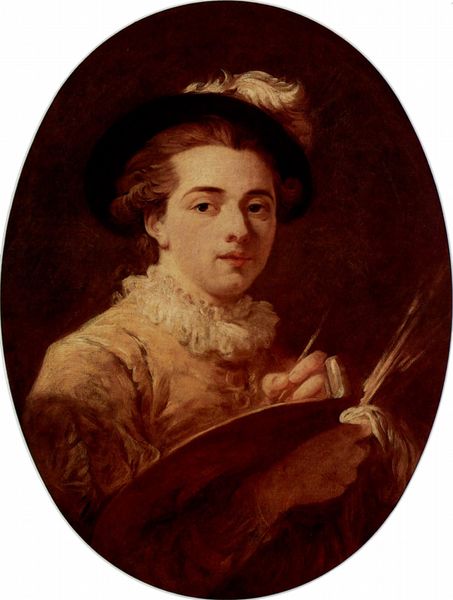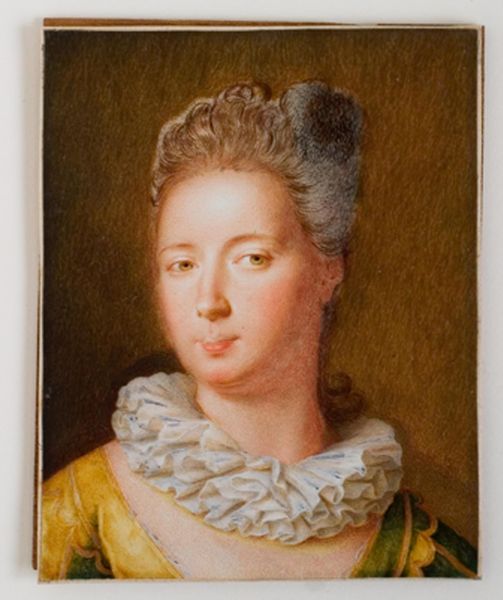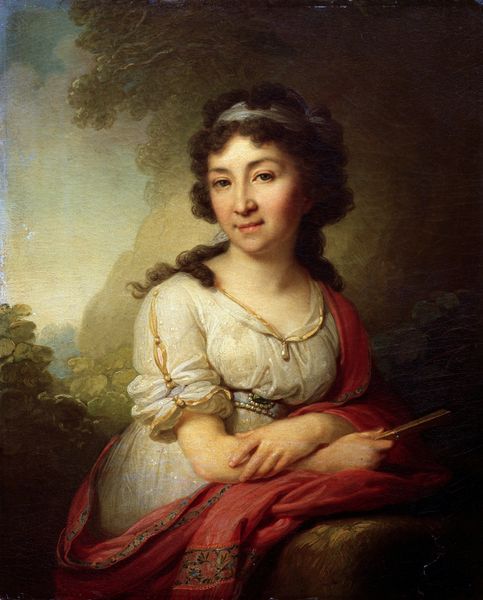
oil-paint
#
portrait
#
self-portrait
#
baroque
#
oil-paint
#
oil painting
#
academic-art
#
portrait art
Dimensions: 11.5 cm (height) x 8.9 cm (width) (Netto)
Curator: This is "Portræt af Rigaud, efter selvportræt", a portrait by David Gardelle, created sometime between 1726 and 1748. Editor: There’s something strikingly earnest about this portrait. The soft brushstrokes and muted tones lend the subject a sense of approachable vulnerability, a kind of romantic sensitivity that draws me in. Curator: It's quite interesting, isn't it? We have here Gardelle’s rendition of Rigaud’s self-portrait. Considering Rigaud's position as a celebrated portraitist within the French Royal Court, Gardelle's act of painting Rigaud becomes layered with considerations of power and artistic lineage. Think about the politics inherent in one artist choosing to portray another, especially one of significant stature. Editor: Absolutely. Rigaud, then, as an established artist of the time, becomes the subject, perhaps a symbolic passing of a baton? There’s a certain defiance as well. A queer reading would understand it as an implicit statement against the heteronormative and patriarchal standards ingrained into academic portraiture in Europe, which tended to be defined by a focus on representing heterosexual figures as paragons of masculinity and leadership, but Rigaud is given agency by the way Gardelle chooses to re-interpret him, thus adding new layers to the gendered symbolism of academic portraits. Curator: It opens up discourse about class too, with the production of portraiture closely entwined with power. Its emergence and popularization reflected the rising wealth and consolidation of aristocratic status, which, until then, had the elite historically monopolized the ability to represent their identity. Editor: And Gardelle’s interpretation introduces more complex considerations about societal status. While retaining the painter's hat and tools of his trade as status symbols, we are being asked to consider more complex markers of individual status beyond just class and economic power, with Gardelle imbuing the artwork with agency through Rigaud. What are your thoughts on Gardelle’s technique, knowing this is an interpretation and not an original portrait by Rigaud? Curator: I think it reflects the period’s approach to artistic emulation and interpretation. By appropriating Rigaud's likeness, Gardelle engages in a dialogue with the artistic establishment and claims a space within that world. There's commentary here on who is memorialized, how they are remembered, and by whom. Editor: Indeed. The soft color palette, dominated by earth tones, also contributes to an aura of humility, I would even argue. Curator: This emulation as artistic agency really makes me consider the historical reception of academic art at that time, and the sociopolitical drivers behind these movements. Editor: For me, thinking of contemporary social frameworks, Gardelle seems to engage us on levels far beyond status and privilege; the artist really delivers something intimate and thoughtful here.
Comments
No comments
Be the first to comment and join the conversation on the ultimate creative platform.
